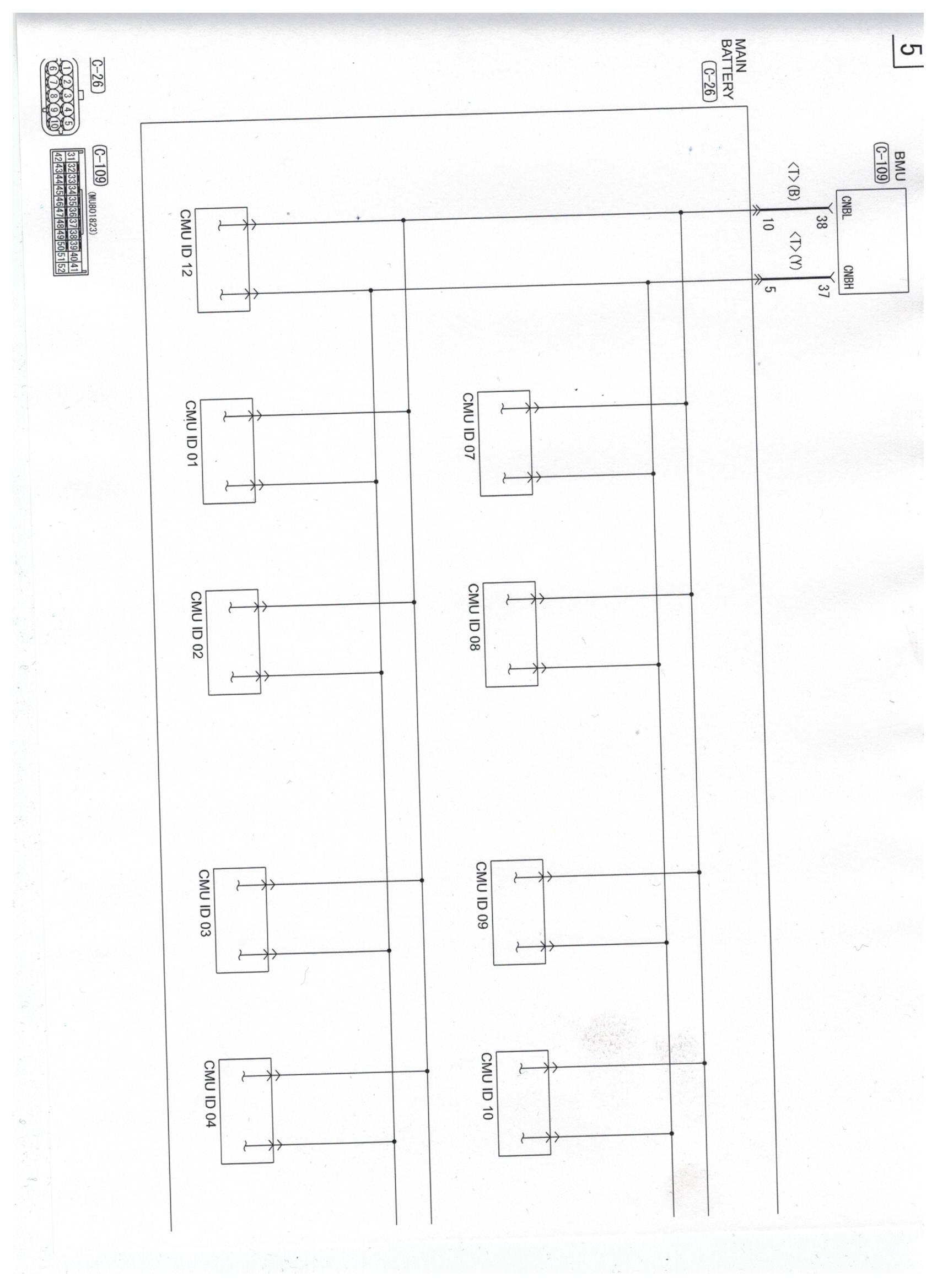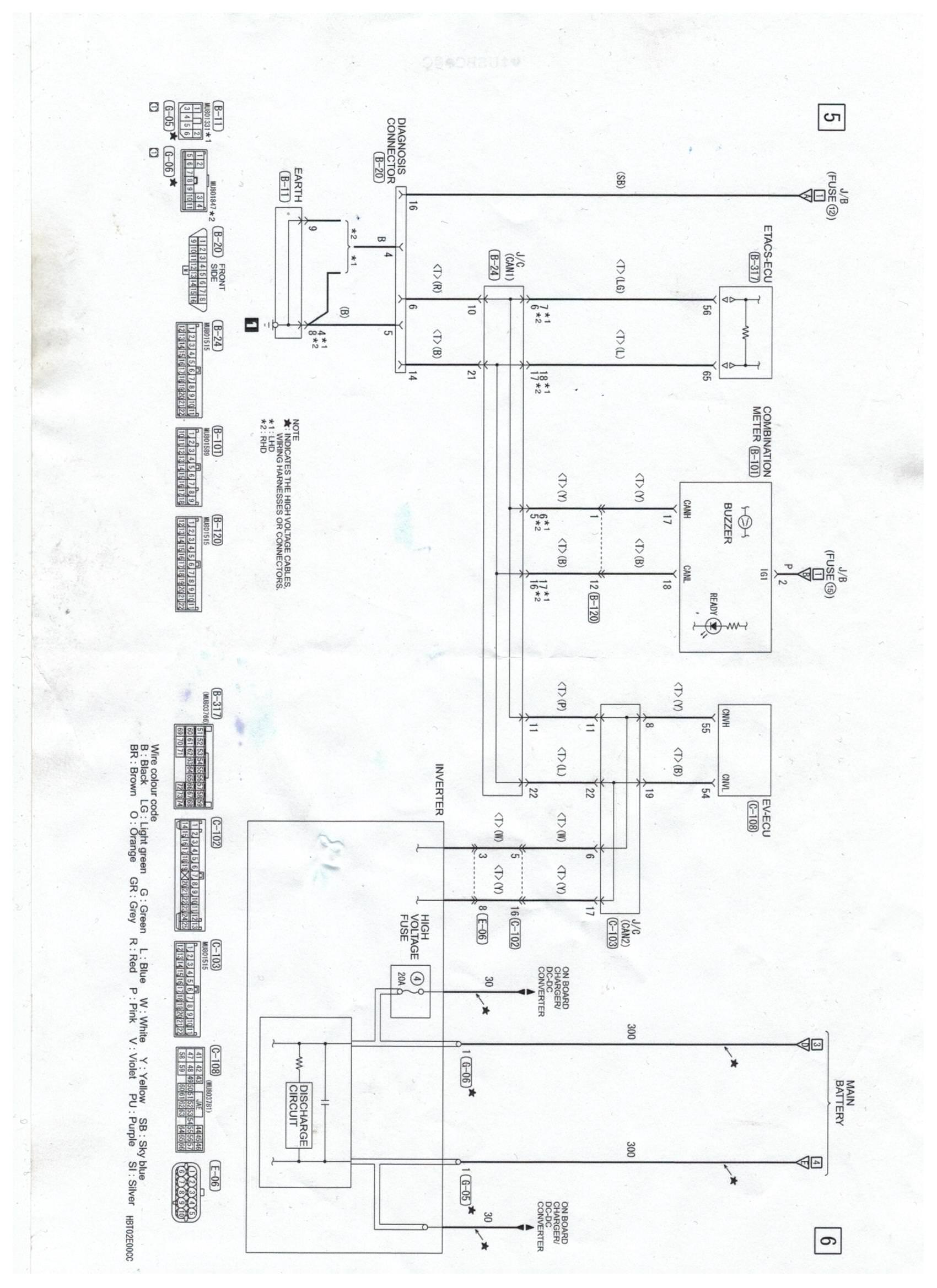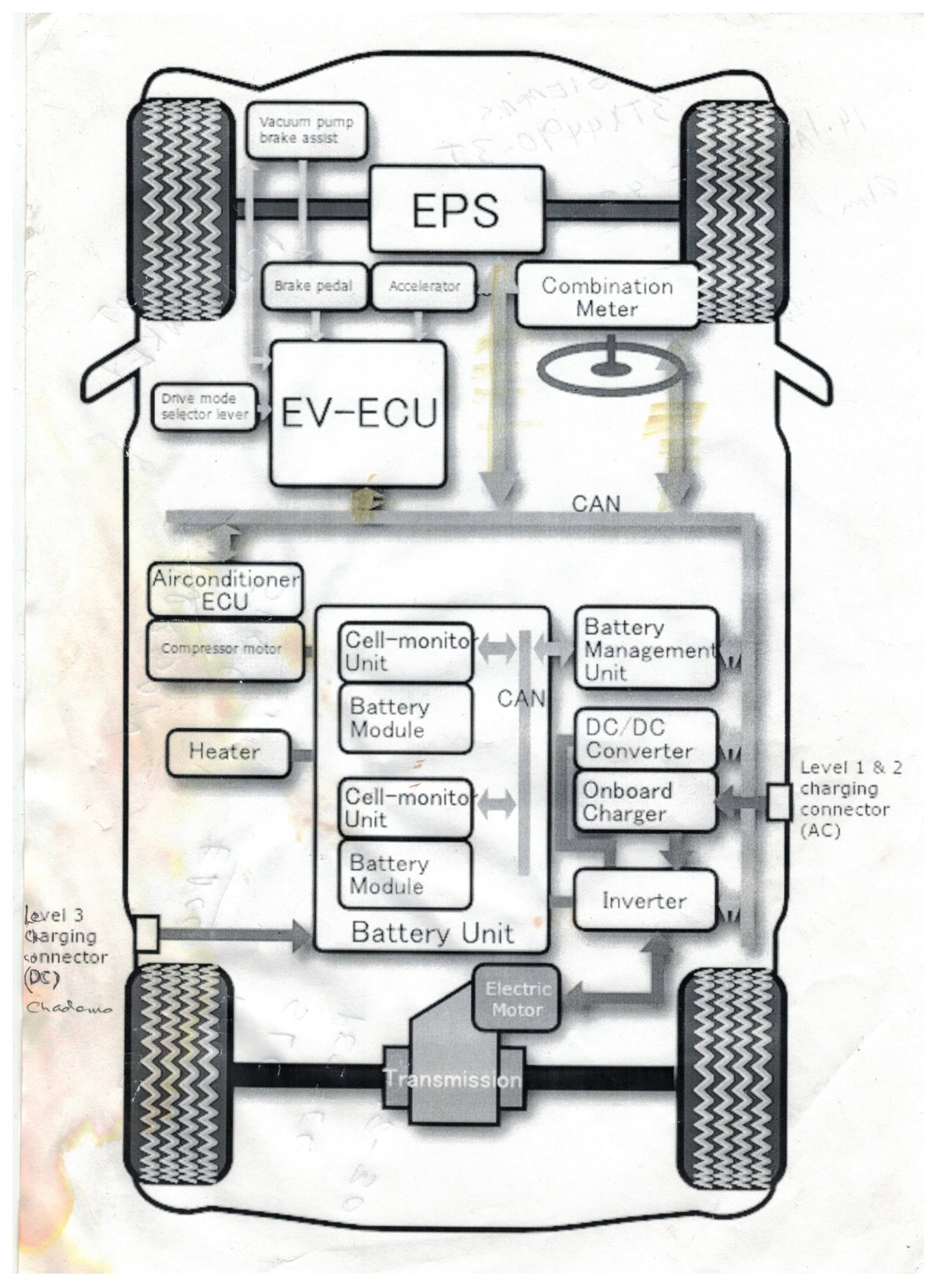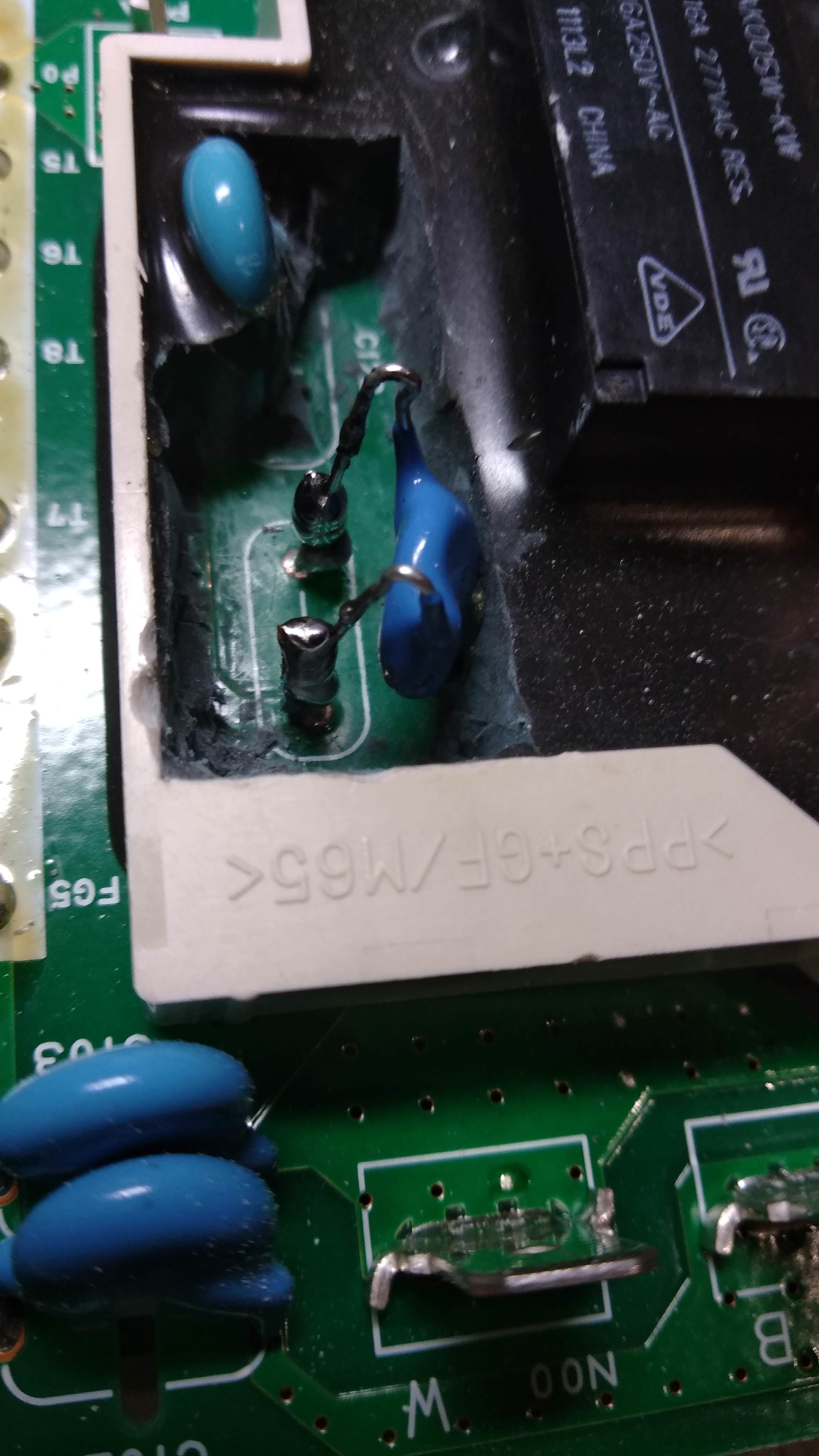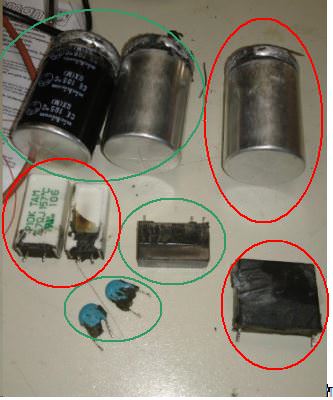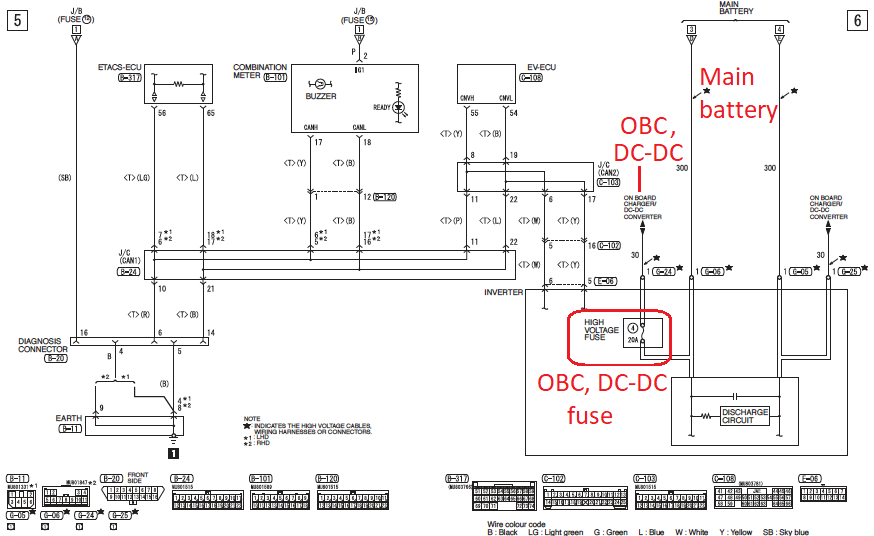skylogger said:
KIEV:
I am tending to give more weight to your theory that majority of OBC Failures are being caused by a sick 12v aux battery.
At first, I thought these failures were due to mains power surges, but now I see more evidence towards the aux battery
being the lead contributor to these failures. Here in WA Australia, we are see the strange co-incident of a lot of OBC Failurs just this last year when there were not that many fauilures previouly. This is on 2010 model IMIEVs. I think one reason we are seeing a lot of cars failing at around the same time is due to the typical life span of the 12v batteries. Most of these cars in WA are using the same brand of low maintenance batteries, and since they do not require periodic topping up with water, most people run them till they drop. In two of the three cases of OBC'S That I fixed, The 12v battery seemed to be ok, showing a 12.xV reading when not being charged, and a 14.xV reading when the DC-DC was charging, but when the batteries were put under load test, they both failed. This means the 12v batteries were only working good enough to keep things alive when the car was shut down, but the DC-DC Converter was doing most of the heavy work while the car was running.
Interesting theory that a sick 12v battery may be implicated as a trigger to these failures. For reference I have just replaced the 12v battery in my 2011 Ion a couple of weeks ago.
Here in the UK the original factory fit type is not low maintenance but actually has the old fashioned screw caps on the top. You can see both the original (very hard to find) type and a replacement type in the following article:
https://www.gogreenautos.co.uk/how-tos/mitsubishi-i-miev-12v-auxiliary-battery
Unlike some EV's which use deep cycle or AGM types these cars seem to use regular "starter" batteries that are not designed for deep discharge.
My 2011 Ion has now done 48k miles and I've owned it for coming up on 2 years in March. The battery seemed "OK" when I first got the car, (although it was never load tested) and in the time I've had the car it has only had one deep discharge where the key was left on acc for a few hours with 3rd party heated seat covers turned on about a year ago. (About 3 amps each) This resulted in a flat battery that was unable to power the ECU's enough to either start or charge. At the time I was at home so I used a 12v charger to "jump" start a normal charging session, the 12v battery was charged up again and everything seemed fine. It was the only time the car let me down and was unable to enter ready mode.
As it's now winter again and I spend up to half an hour a day sitting in the car waiting to pick my other half up after work I run one heated seat cover rather than the main heater as I don't have enough range to just sit with the heater on for that period of time... and I recently had an experience where the heated seat cover was only on for 8 minutes until the radio faded out and both radio and my dashcam turned off. Whoops!
A bit of voltage monitoring and I realised that the battery was so sick that it was only able to power a 3 amp heated seat cover for 8 minutes, (about 0.4Ah usable) when a 36Ah battery should be able to power it for well over 10 hours... Yikes. I also discovered that the radio doesn't shut off until it gets down to 9 volts. Amazingly, after this happened I was still able to put the car into ready mode so ECU's and contactors seem to be rated to still function as low as 9 volts.
So a couple of weeks ago I replaced the battery with a Yuasa YBX5054 and all is well again - it easily runs the heated seat covers for a long time without any significant sag.
I did some cycle testing of the old battery (it's stuffed anyway so why not) and at a discharge rate of 0.4 amps it had only 1.4Ah usable capacity left from 36Ah. There was nothing wrong with the electrolyte levels - despite me not checking them in the two years I've had the car the levels were perfect. Looking at the battery I'm reasonably sure that it's the original 8 year old factory battery, and that doesn't surprise me because ICE car tradition is that you don't replace a 12v battery until it lets you down. Nobody replaces them preemptively.
The lesson I learnt from this is that the demands on the 12v battery in this car are exceptionally low, allowing the battery to deteriorate dramatically without any symptoms, and by then it is too late. That battery would have failed to start an ICE years ago and been replaced. When parked it only needs to be able to supply a few of the ECU's in standby mode, such as the central locking ECU, and to start the car or commence traction battery charging as long as it can stay above 9 volts for a couple of seconds while the BMU ECU is trying to sequence the contactors then the DC/DC converter will take over and supply all the 12v system loads including the heavy loads like the brake vacuum pump and power steering which are both hundreds of watts peak.
If a failing 12v battery is implicated in these OBC charger failures then as you say we are going to see a lot more OBC failures soon as the 12v batteries on the old cars start giving up, and I'm glad I've replaced mine!
I also had one case where I fixed the blown snubber caps in the OBC, replaced the 20amp MCU Fuse, and all was working, but then two weeks later, the car's 12v battery failed. even though it was a low maintance battery, you could smell the battery giving off the sulferic acid smell, and it was only showing 11v and would not start the car. Once we replaced that, all has been good now for several months. I am starting to believe that if you have a faulty 12v battery that is causing a high current load trying to be charged, and the Traction battery is also low at the same time, and you try and charge the traction battery from AC at the same time, The combination of both heavy loads and maybe a few other loads in the car added together become enough to blow the 20amp fuse. Once this blows, there is a domino effect of a inductive spike that blows the snubber caps in the OBC. For preventing this problem, it's not enough just to check that the 12v battery is going up to 14v when being charged, you have to use a load tester to see that the 12v battery is actually healthy and not causing extra current load from being in poor health.
Can you describe what is on either side of this 20 amp fuse and which direction the flow is in depending on operating mode and conditions ? I haven't seen the circuit diagrams you guys are referring to.
I'm a little bit skeptical however that a weak and failing 12v battery will cause issues directly as a result of placing a higher load on the DC/DC converter that is trying to charge it. On the contrary a weak battery that has lost 90% of it's capacity as mine had will provide an "easy" load to charge, because it will have both high internal resistance and a very small capacity to charge.
Mine only required 1.4Ah to fully charge it, and the internal resistance was high enough that my 6 amp charger had to throttle back to about 2.5 amps within seconds of starting the charge to keep the voltage from going over 14.4 volts. In other words it literally couldn't be charged at a rate any higher than about 2.5 amps or 36 watts even from dead flat!! Hardly a difficult load for the charger which I believe is designed to be able to supply at least 80 amps to the 12v systems.
No, if a failing 12v battery is responsible I think the mechanism will be different, it will be a loss of proper contactor control and sequencing or a low voltage induced malfunction of one or more ECU's.
Let me paint one possible failure scenario - not for this exact fault you're referring to but the kind of thing that could happen. Contactors are just big relays so like relays they have both a pull in current and a hold current.
For example it may take 1 amp to pull in a contactor, but only 0.3 amps to hold it. (1/3rd of the pull in current is typical with relays)
During the power up sequence of the battery pack for either charging or entering ready mode there is a pre-charge contactor that connects the pre-charge resistor on the positive side for a fraction of a second before the main positive side contactor is closed. Normally it would expect the voltage to charge up in a very short time. If it does, it then closes the main contactor, if it doesn't, it opens all the contactors and aborts assuming there is a fault such as a short on the output or a faulty pre-charge resistor.
However what happens if the battery is very weak and only just able to supply one or two contactors ? The negative contactor and pre-charge contactors are closed and start to charge up the output. At this point a couple of things could happen.
One is the load of those two contactors may pull the battery voltage low enough to cause the BMU to crash/malfunction whilst still allowing the contactors to remain closed. This would almost certainly burn out the pre-charge resistor if there is any active load on the HV system as it's only designed to handle that load for a fraction of a second.
Another possibility is that the ECU continues to function and tries to close the main positive contactor but the voltage is too low so the contactor can't actually pull in, but the two that are already closed have enough power to keep them closed. So the ECU thinks it has closed the main contactor but it actually hasn't and the load is still being supplied by the pre-charge resistor. This will almost certainly result in the pre-charge resistor burning out in a very short time as well.
Once that resistor is toast the car even with a healthy 12v battery will no longer start or charge.
If you think about the interactions between contactor sequencing, contactor loads on the 12v battery and the variations in battery voltage that may cause with a faulty battery and the effects that may have on ECU and contactor functioning it's easy to envisage scenarios where the normal high voltage sequencing systems fail with catastrophic results.
It may be prudent than any car which has a failure with the OBC has its 12v battery tested and replaced before it is put back into service if there is any doubts about the condition of the battery. It's a small price to pay to avoid another failure if it is a contributing factor!




